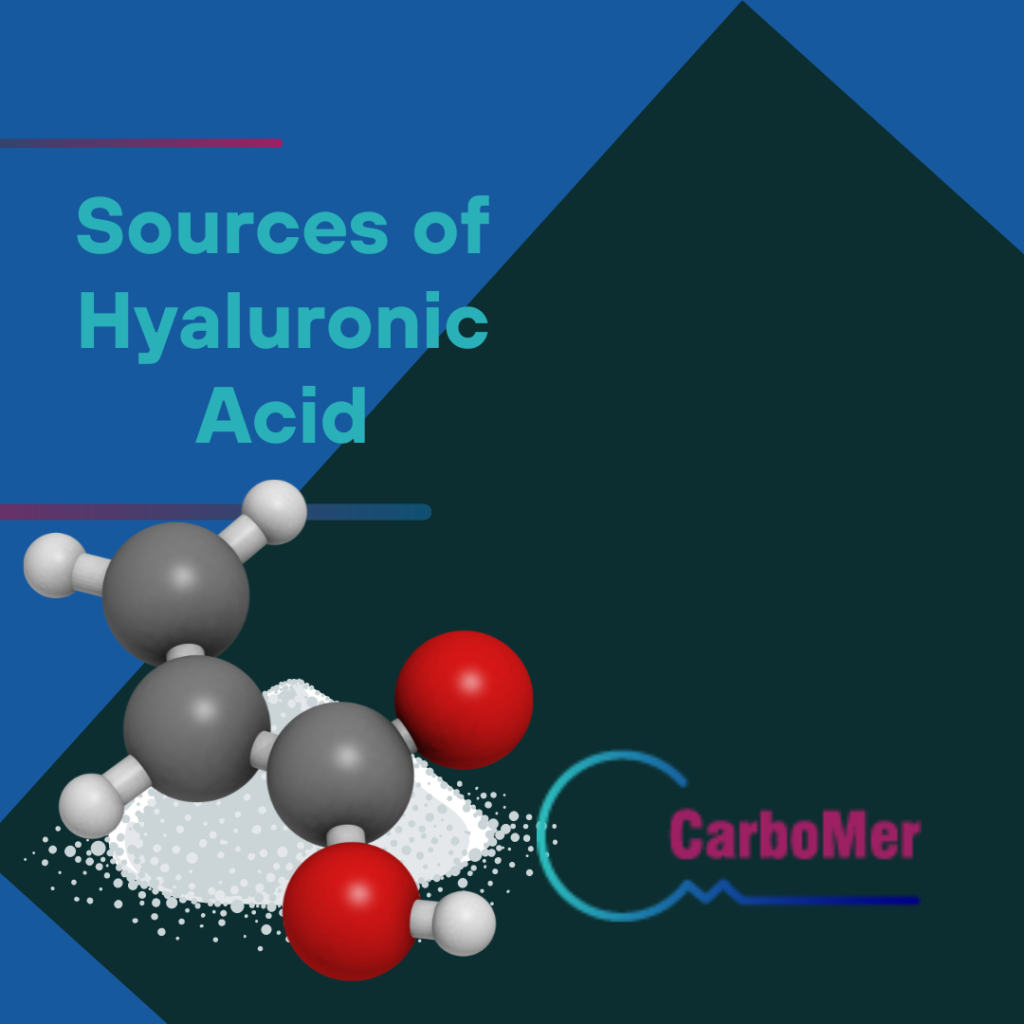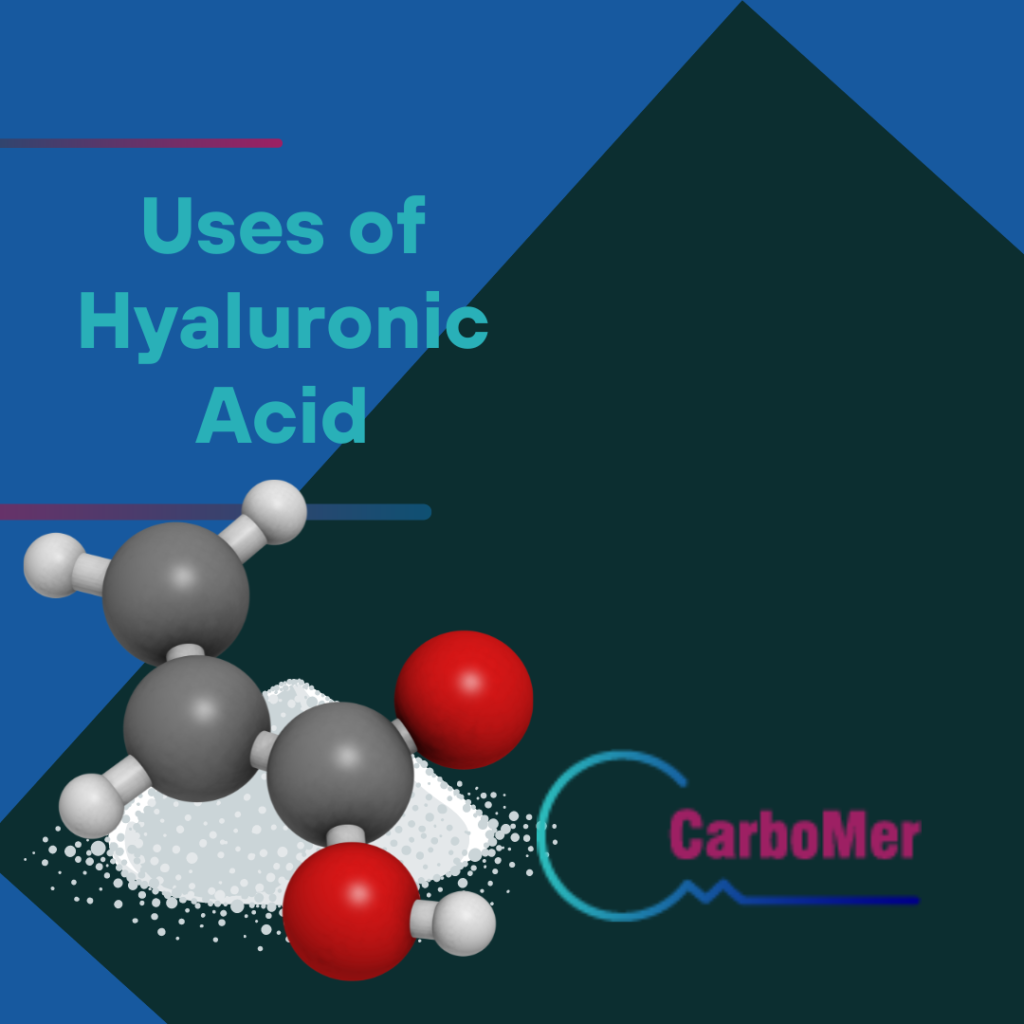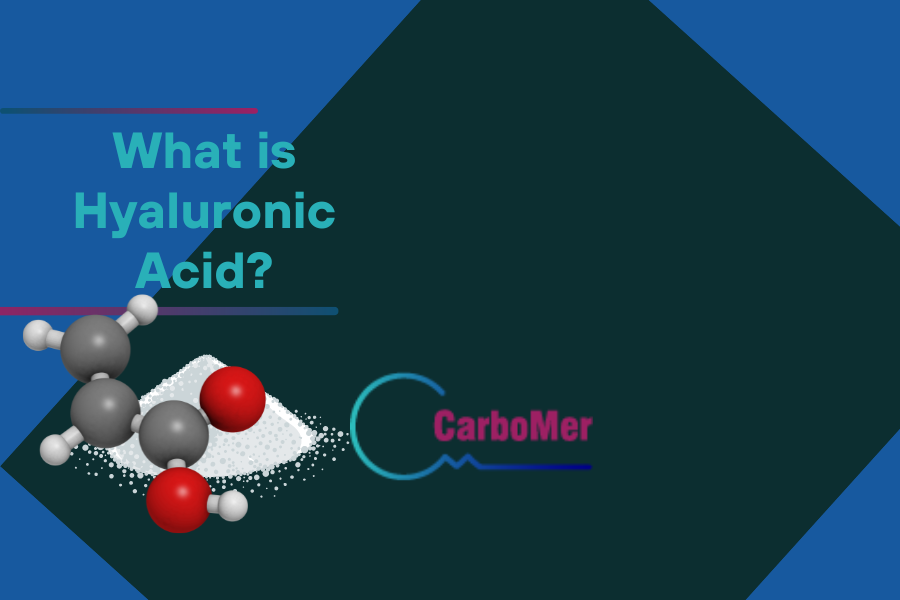Hyaluronic acid (HA) also known as Hyaluronan is a high molecular weight carbohydrate polymer consisting of 1,3-b-linked N-acetyl-D-glucosamine–1,4-b-D-glucuronic acid repeat units. It has a wide range of physiological functions and is also a soluble dietary fiber.

Sources of Hyaluronic Acid
Natural sources include rooster combs, umbilical cords, shark skin and bull’s eye. It can also be manufactured by fermentation.
What does Hyaluronic acid do?
HA offers numerous health benefits. It can serve as a prebiotic, promoting gut health by feeding beneficial bacteria and supporting digestive health weight management. It can also regulate blood sugar, enhance mineral absorption and immune function. HA is a valuable addition to both food and pharmaceutical products.
Physiologically it is involved in the lubrication and protection of cells, the maintenance of tissue structural integrity, and the transport of molecules to and within cells. Hyaluronan is also found in many cellular processes, such as in proliferation and migration, in developing, regenerating and remodeling tissues and in malignant tumor-cell invasion. The prevalence of HA-binding proteins indicates the important of HA recognition in tissue organization and the control of cellular behavior. The presence of specific HA cell receptors opens up potential uses in cancer therapy. Other biomedical uses include cataract surgery, osteoarthritis, and the prevention of post-surgical adhesions. Moreover, it displays useful wetting and moisture-preserving functions that are of great interest in cosmetic and topical medical areas.

Uses of Hyaluronic Acid
Skin care and dietary supplements
Topically, HA can heal burns, bed sores, wounds, and skin ulcers. When injected, it can also alleviate severe knee pain from osteoarthritis.
It helps to keep things hydrated and things move smoothly. Hyaluronic acid helps your joints work like a well-oiled machine. It prevents pain and injury from bones grinding against each other.
Hyaluronic acid is very good at retaining water. A quarter-teaspoon of Hyaluronic acid holds about one and a half gallons of water. That’s why Hyaluronic acid is often used for treating dry eyes. It’s also used in moisturizing creams, lotions, ointments and serums.
It makes your skin flexible. Hyaluronic acid helps skin stretch and flex and reduces skin wrinkles and lines. Hyaluronic acid is also proven to help wounds heal faster and it can reduce scarring.
Is Hyaluronic acid safe?
Yes. research shows that Hyaluronic acid is safe to use. Reactions or adverse effects from Hyaluronic acid are rare, and it’s safe to use if you’re pregnant or nursing.
How does Hyaluronic acid interact with other products?
Products that combine Hyaluronic acid with other medications or compounds may have some risks of side effects.
It’s important to tell your healthcare provider about all medications that you’re taking, including supplements, vitamins, etc. They can help you better understand any potential concerns.
There are many ways you can take Hyaluronic acid (either on its own or in combination products). Many are available over-the-counter. Some need a doctor’s prescription. For some, you need to see a trained medical professional.
A few of the different ways (available over-the-counter) that Hyaluronic acid can be used include:
Orally: Hyaluronic acid comes in dietary supplements and pills. There’s even a liquid form that you can mix with water and drink.
Taking Hyaluronic acid orally can have many benefits. These include reducing arthritis pain, improving skin health and more.
Topically: Hyaluronic acid products come in various forms that you apply to your skin. These include shampoos, lotions, creams, gels, ointments, patches and serums. You can also buy Hyaluronic acid powder and mix it with water to create a HA serum you can apply to your skin.
Hyaluronic acid has beneficial properties when used on your skin. It’s especially useful for reducing the appearance of wrinkles and age lines.
Eye drops: A wide variety of eye drops contains Hyaluronic acid.
For intimate contact: Hyaluronic acid is a common ingredient in gels, creams or personal lubricants for vaginal dryness or pain, especially for women experiencing menopause.
Hyaluronic acid is also available by prescription in the following forms:
By injection: Hyaluronic acid injections into your joints can relieve pain caused by arthritis. It’s also commonly used with medications given in an IV. Healthcare providers may prescribe it off-label to treat bladder pain (such as pain caused by interstitial cystitis).
Under your skin: Fillers containing Hyaluronic acid and collagen (a natural protein also found in your body) are approved for injection under your skin. These fillers help restore natural shape and appearance, such as for treating acne scars or adding volume to lips.
In your nose: Some medications use Hyaluronic acid because it helps the body to absorb them, especially when taken through the nose.
By inhaler/nebulizer: Hyaluronic acid can treat respiratory (breathing) problems such as asthma or infections.
Hyaluronic acid belongs to a type of long, complicated chain-like molecules called polymers. The chain has plenty of spots on it where other chemical compounds (like water, for example) can latch on. That’s why a quarter-teaspoon of Hyaluronic acid can hold about one and a half gallons of water, making it the best polymer — natural or artificial — for absorbing water (and a key ingredient in moisturizing products).
Because it has lots of space for other molecules to latch on, Hyaluronic acid is great for transporting other molecules throughout your body. It also has the ability to attach itself to cells, which is why targeted delivery of medications using Hyaluronic acid is a major topic of study.
Hyaluronic acid’s chain-like structure also means it can act like a scaffold structure, allowing tissues to grow. This is a key step in how wounds heal on your body. Scientists have also found Hyaluronic acid in human embryos and are studying what role Hyaluronic acid plays in reproduction and development.
What does Hyaluronic acid do for skin?
Long-term use of Hyaluronic acid serum on your skin or in a supplement taken by mouth can improve overall skin health. It’s also great for helping improve overall skin flexibility and elasticity (meaning it makes your skin more stretchy and soft).
Is Hyaluronic acid good for acne?
Hyaluronic acid is widely used as an ingredient in fillers that repair or conceal scars left behind by acne. There has been some limited research into combinations of Hyaluronic acid and other medications to treat acne, but so far, there isn’t much evidence that these are effective.
Is Hyaluronic acid safe?
Yes, depending on how it’s used. Over-the-counter Hyaluronic acid serums and products applied on your skin (creams, lotions, etc.) or in eye care products are considered safe. Hyaluronic acid supplements taken by mouth are also considered safe (but you should still tell your healthcare provider about them, as you would for any other medication, vitamin or supplement).

